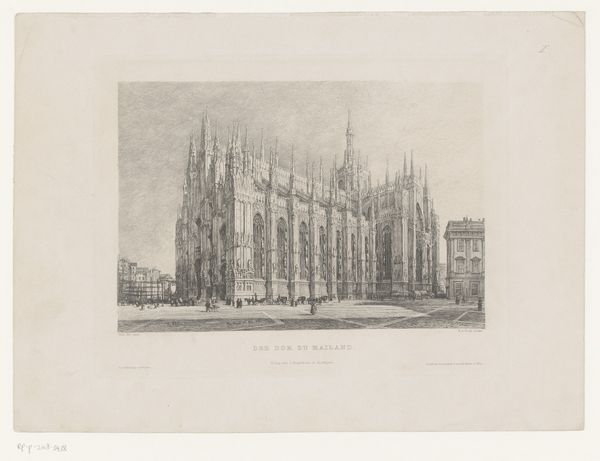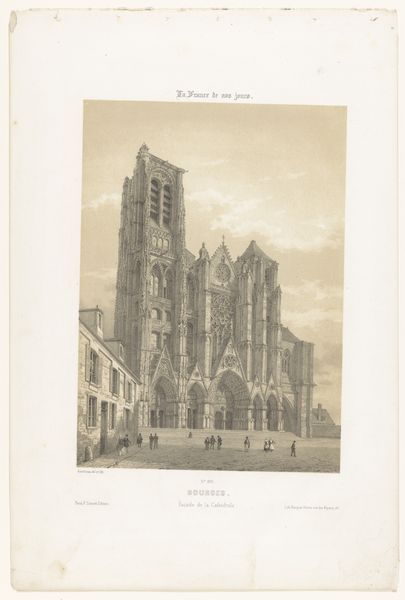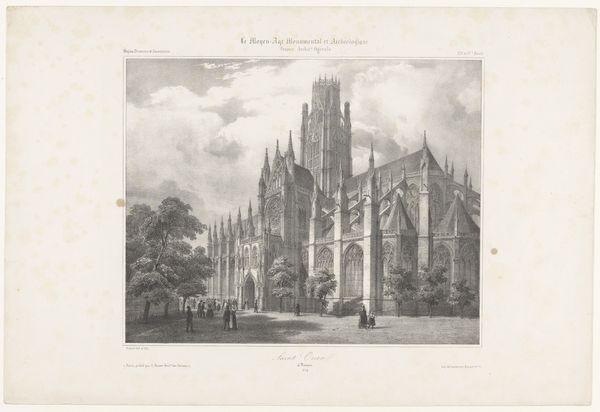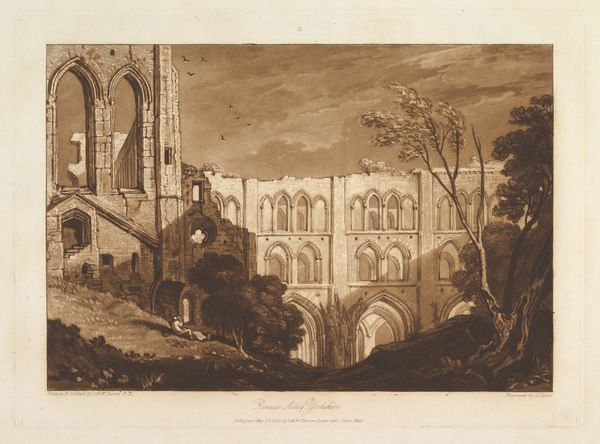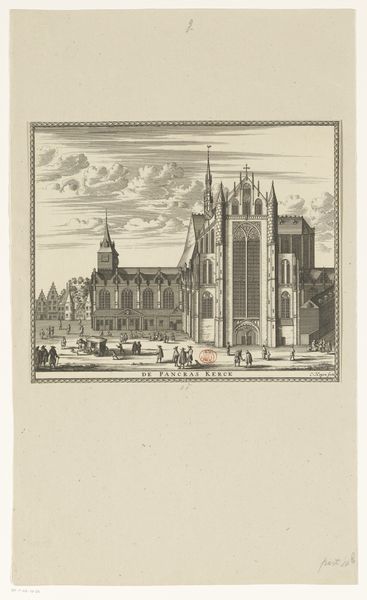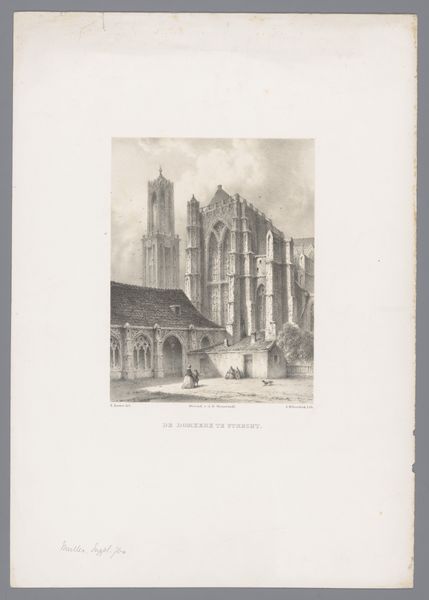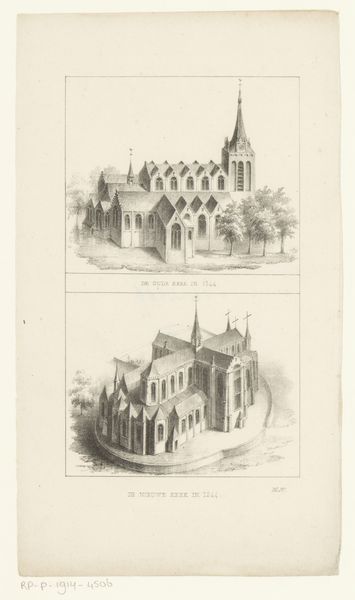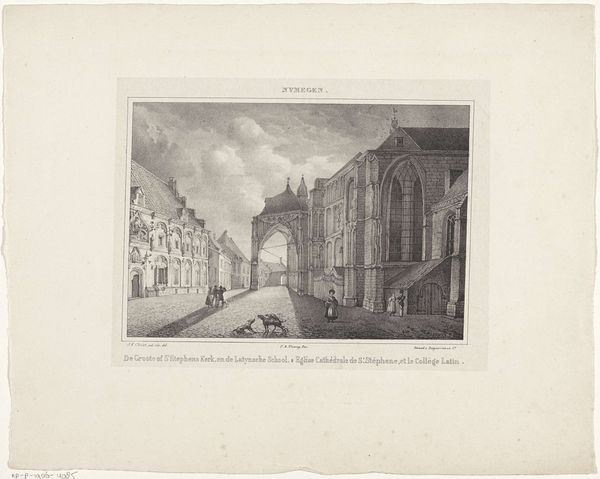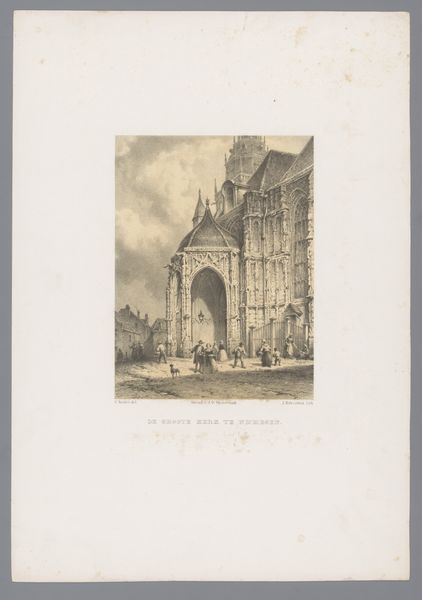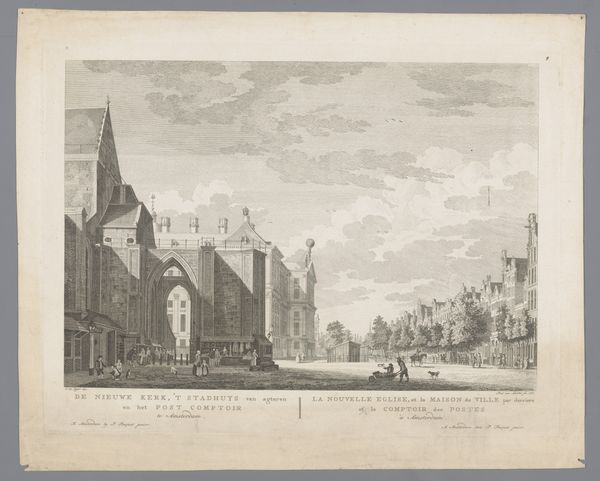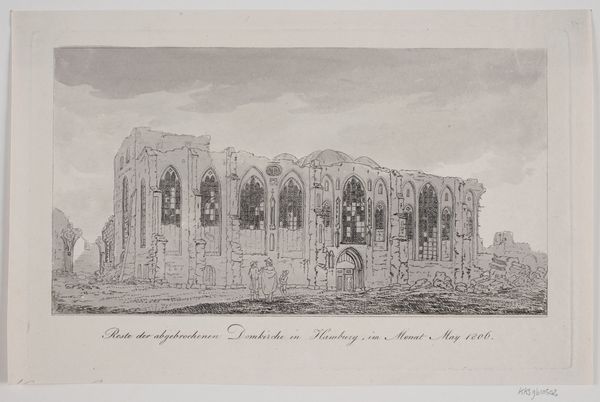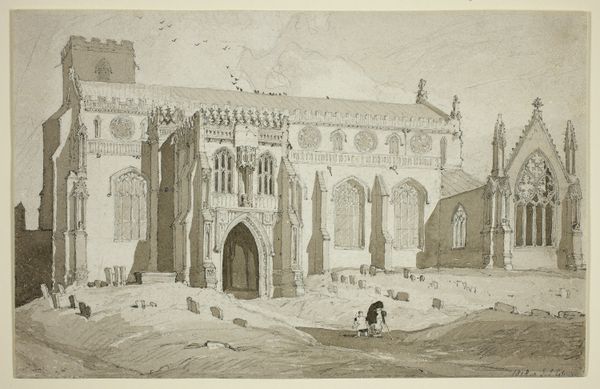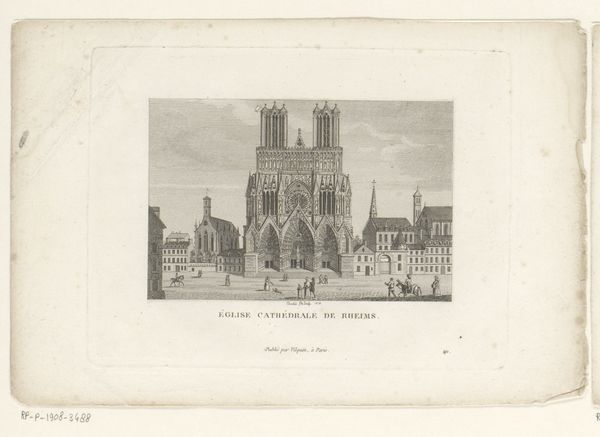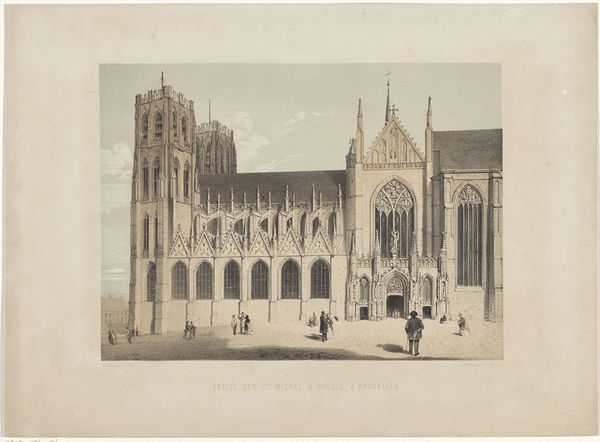
print, etching, architecture
# print
#
etching
#
perspective
#
romanticism
#
cityscape
#
architecture
Dimensions: height 248 mm, width 317 mm
Copyright: Rijks Museum: Open Domain
Editor: This is "View of the Sainte-Chapelle in Paris," an etching by Jean-Baptiste Arnout from around 1820. I'm immediately struck by how the architectural details are rendered with such precision, especially given it's a print. How does the medium influence your reading of the piece? Curator: I'm particularly interested in how the etching process, a repeatable medium, democratizes the image of power embedded in the Sainte-Chapelle. The labor of the artist—Arnout's intricate work with the etching needle—reproduces this symbol of religious and royal authority, making it available for broader consumption. We might also consider the social context. What purpose did these prints serve beyond mere decoration? Editor: So, instead of just seeing a beautiful building, we should think about who could afford these prints and what they represented at the time? Curator: Exactly! The materiality of the print, the paper, the ink, becomes part of the narrative. How does mass reproduction change the aura or perceived value of a monument like Sainte-Chapelle? Consider the resources and labor involved in the etching versus, say, commissioning a painting. Editor: That makes me think about the distribution networks and how they shaped access to art in the 19th century. Was Arnout intentionally commenting on that through his work, or was it simply a practical means to an end? Curator: Intentions are hard to know. But we can analyze how Arnout's choice of medium – etching, a method enabling multiples – speaks to broader social shifts towards increased accessibility and the changing relationship between art, power, and the public. This wasn’t a unique commission, it was designed for consumption. Editor: I never considered that a print could reveal so much about social structures! Thanks for making me rethink my perspective on this. Curator: It's precisely that connection between materials, methods, and social meaning that makes art history so compelling. Hopefully, others appreciate this dialogue as well!
Comments
No comments
Be the first to comment and join the conversation on the ultimate creative platform.
